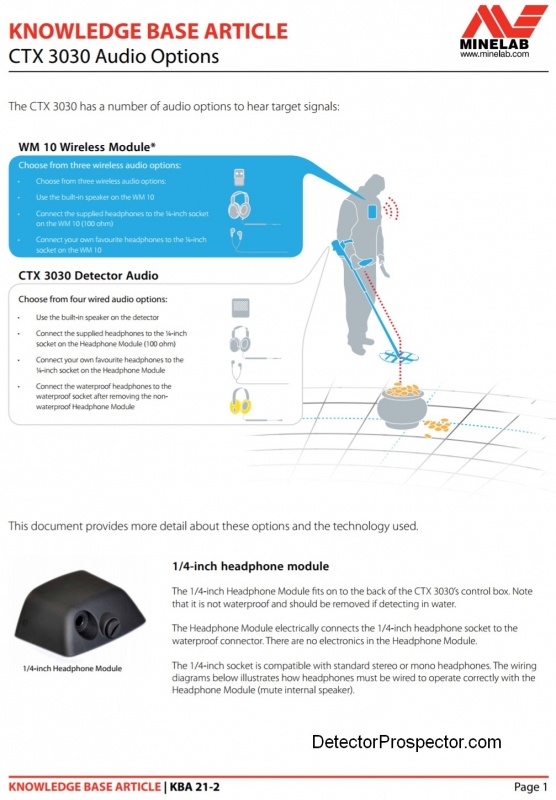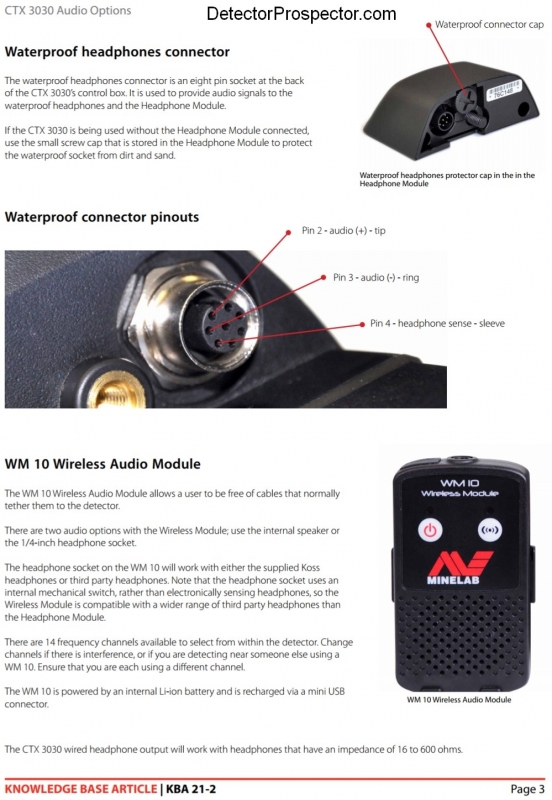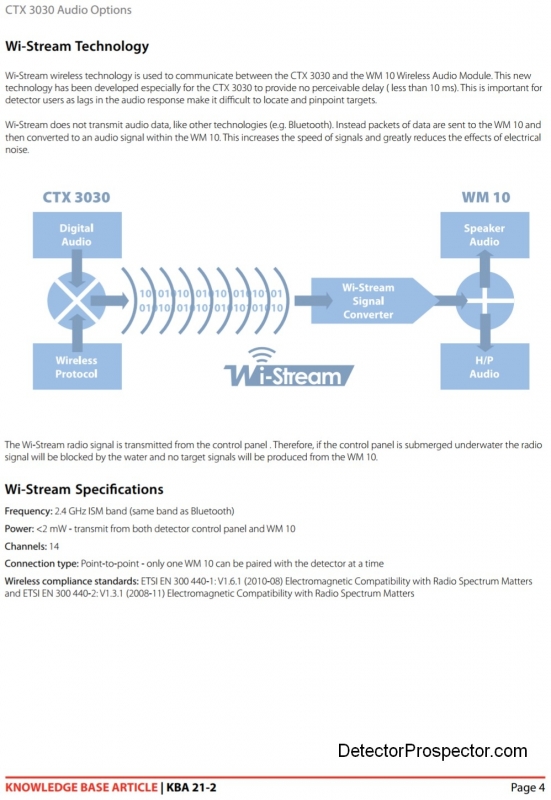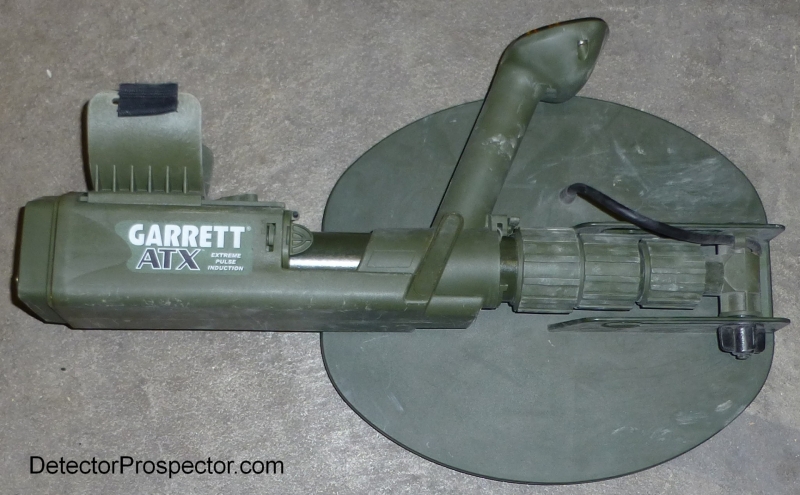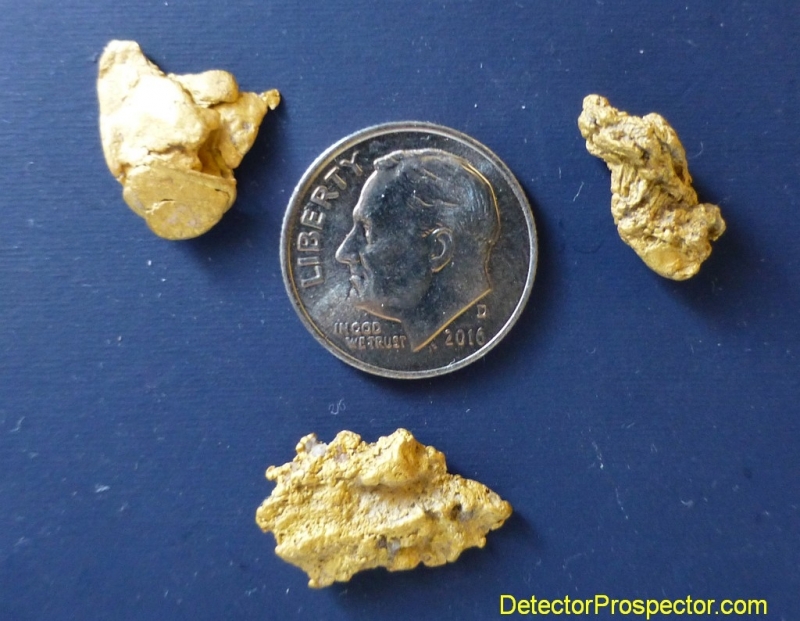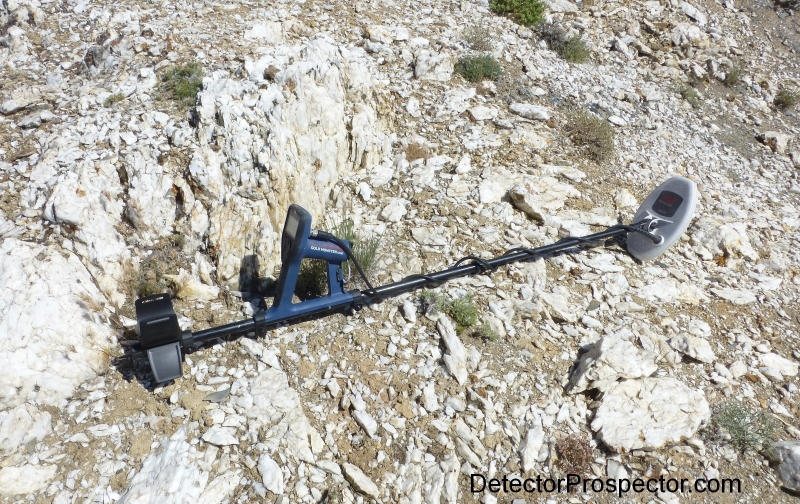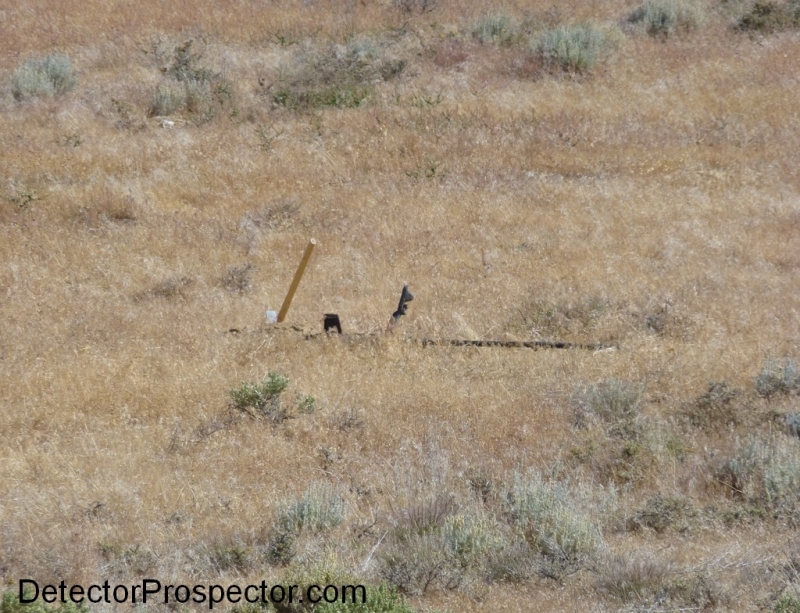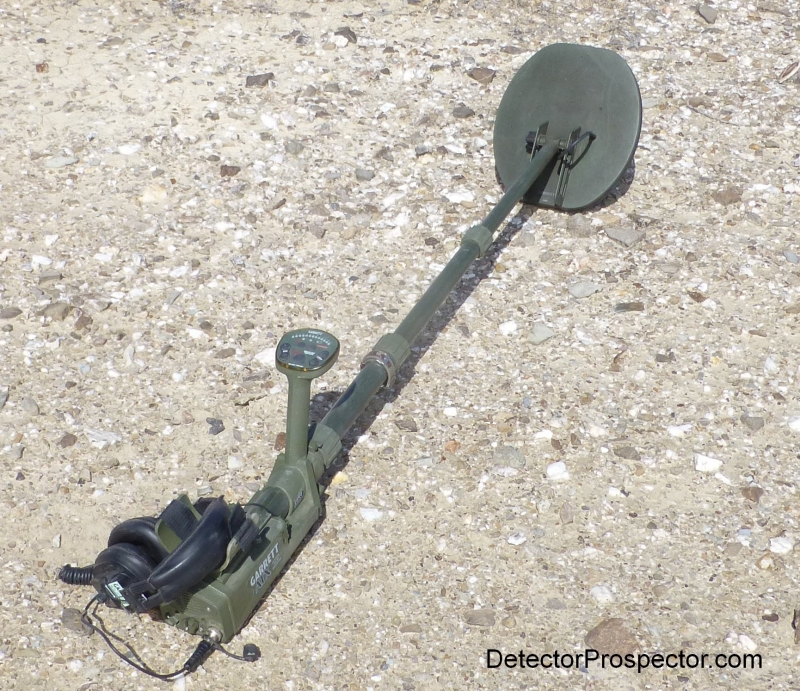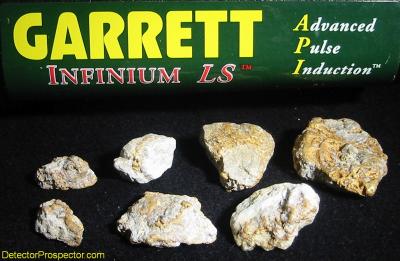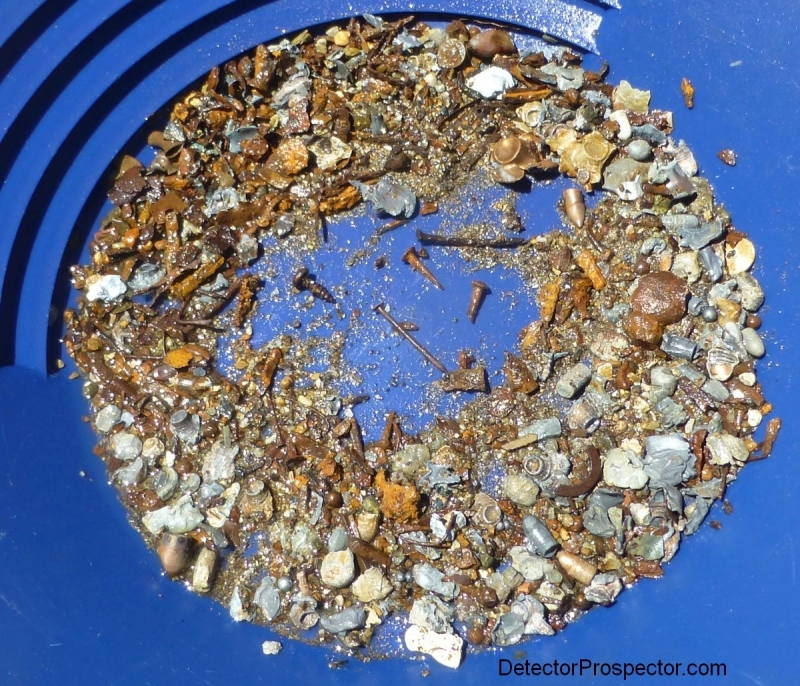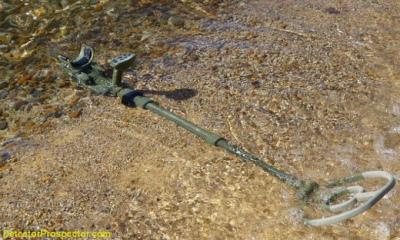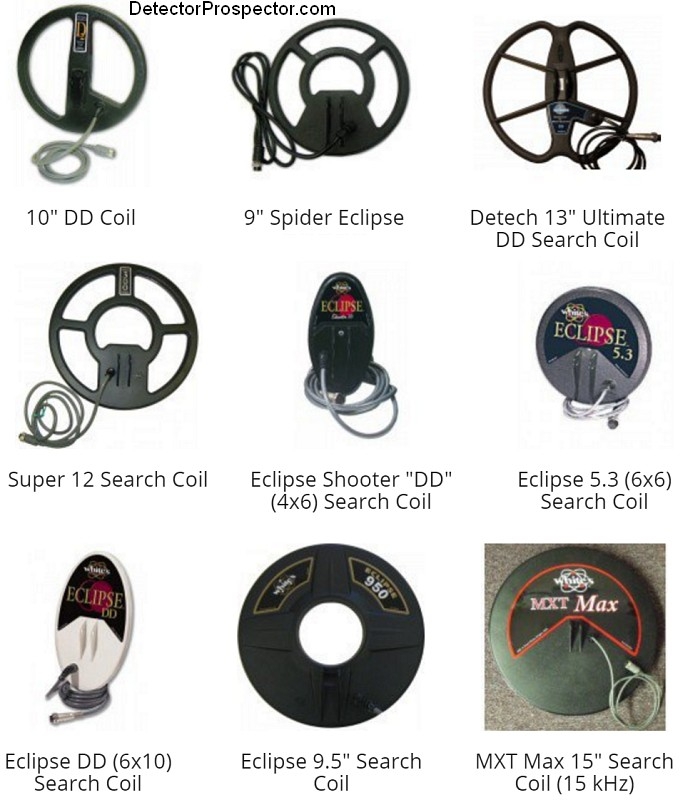-
Posts
19,802 -
Joined
Content Type
Forums
Detector Prospector Home
Detector Database
Downloads
Everything posted by Steve Herschbach
-

XP Deus HF Elliptical Coil Delayed Until July?
Steve Herschbach replied to Ono's topic in XP Metal Detectors
Oh, I would not say 5" air test on a penny sounds good! I just was pointing out that out of all the coils made for the DEUS so far I would expect this one to get the least absolute depth on high conductive coins no matter the frequency. How much less remains to be seen. I think people do have reason to be concerned and perhaps hold back. This coil was delayed a couple extra months and never a word of explanation. Some kind of issue to be overcome? I don't know, but the old wisdom about not being the first kid on your block to get new detecting toys still holds true. This is not just a coil but is actually a $425 metal detector and so a lot more is going on here than just wire in a housing. The DEUS HF elliptical was designed for and is marketed as a gold prospecting coil, so how it fares in highly mineralized ground on small gold nuggets versus my GM1000, Gold Racer and Gold Bug 2 are questions at the top of my list. The 3.5" air test on a half gram nugget does not sound good either, but as always it's real world results that matter. -
Well, check those switches on the Black Widows first! However, this is a known issue with other Minelab detectors. Headphones do need to be wired properly in order to work with some models. This Minelab Knowledge Base article goes over the issue as relates to the CTX 3030. I believe the GPZ 7000 is identical in this regard. Sun Ray makes two models of Sun Ray Pro Gold headphones, the original model, and another model wired specifically to work correctly with the CTX 3030 (and other detectors also) for $5.00 more. Why not just make the one model that works with all detectors? Good question. Long story short I own two sets of the Sun Ray CTX version and they work with anything. I would tend to doubt this is the problem on the GM 1000 but figured I would mention this just in case. Click on images below for larger versions....
-

XP Deus HF Elliptical Coil Delayed Until July?
Steve Herschbach replied to Ono's topic in XP Metal Detectors
I doubt this coil would get "more depth" in absolute terms on high conductive coins. Any of the existing coils should be better choices for pulling copper and silver coins at depth. However, this coil may pull coins at two or three inches in dense trash that are missed by the other coils simply by virtue of the narrow footprint. This is a sniper coil, not a deep seeker. Same guy is quoting a 3.5" air test on half gram gold nugget running at 80 kHz. -

Some Nevada Gold Nuggets
Steve Herschbach replied to Steve Herschbach's topic in Detector Prospector Forum
I am testing the new coils, which will only mount on my stock ATX. In this case it works out better anyway as the weight actually is a benefit when trying to swing in the grass and weeds. Besides, the "boat anchor" still weighs less than my GPZ so I guess it's all relative. -
I think the swing faster thing may be misunderstood. In moaning groaning areas the only real solution previously was to slow way down. Now, you should not have to slow down as much. That's all.
-

Garrett ATX 11x13 DD Or 11x13 Mono Or 10x12 DD
Steve Herschbach replied to Jalance's topic in Garrett Metal Detectors
I have been out and about recently with the new 11” x 13” DD coil Garrett has introduced for the ATX. I have both the DD and mono versions of the new coil but so far most of my time in field has been with the DD coil although I have also used the mono. The new coils are aimed at a few issues that owners of previous ATX coils have complained about. First, the rather unique rear hinge design of the previous ATX coils that allows the detector to fold up into a particularly compact configuration. This design has two issues. As the coils age the weight tends to cause the coil to slowly sag forward. Not a huge factor but it can result in constant small adjustments to level the coil out. More important it throws the weight of the coil forward, hurting the center of balance. Again, not a huge issue, but one that becomes more apparent if you try and mow through high grass and weeds with the ATX. Finally, the original ATX coils had a tendency to catch an edge on a rock or other hard object and generate false signals when pushed to the highest sensitivity levels. Garrett came up with an ingenious fix for these issue, that both allows the coil to fold up as desired while delivering that center mount coil so many have craved. The new coil design in a fully enclosed design that has a sliding channel that lets you move the coil attachment point from rear to center or anywhere in between. You don't see something new in metal detecting very often but this really is. And it works. Here is a shot of the new coil with the old design inset into the upper right. The new design is completely enclosed. This is a benefit especially while nugget detecting as putting a full scuff cover on the old design creates a catch area for weeds, twigs, and other debris. The new design sheds debris and so is better for dry land use, but the old designs will remain the coils of choice for in water use. I was initially more excited about the mono version of the coil because of my experience with other PI detectors which often favor mono coils for overall performance. The ATX however was designed specifically around a unique Garrett DD design that modifies the overlap area of the double D design to create what is in effect a small inner coil region that is exceptionally hot on small gold. This roughly 4.5” x 5” inner coil area is nestled directly in the middle of the overall 11” x 13” area. This inner area is not visible due to the enclosed housing design but it is there and a user wants to be very aware of this fact when hunting for the smallest gold. The mono version of the coil lacks this hot inner coil area and so lacks the extra sensitivity to small gold created by the dense electromagnetic field generated there. The mono coil is actually hotter around the perimeter of the coil where the windings run but overall it is a bit less sensitive to the smallest gold than the DD coil although in theory the mono should have an edge for depth on multi-ounce nuggets. The mono coil also lacks the DD ability to engage and use the rather decent ATX shallow ferrous rejection circuit, which only works with DD coils. For these reasons I think most people will be better served by the DD version of the new 11” x 13” coil, with the mono being a better choice perhaps for those seeking some small advantage on the largest gold nuggets at depth. I own the Garrett ATX mostly because of its versatility. It is my favorite beach and in water detector due to the robust physical design combined with an ability to handle the worst combinations of salt water plus magnetic black sands and cobbles. This works very well at most western U.S. ocean and lake beach locations and at volcanic island locations like Hawaii. I actually do a bit of coin detecting with the ATX also. The ATX is also a very capable prospecting detector that complements the other detectors I have very well. The ATX can ground balance to just about anything, making it very useful in desert salt flat areas and for handling certain hot rocks that other detectors struggle with. The ferrous discrimination, while not perfect, is one of the best available in a PI detector, with the main failing being that it only works on shallow targets. It does not help for those really deep nails but is a definite aid in an area littered with surface trash. I also discovered another advantage with the ATX on a recent trip. I had been doing some prospecting for most of a week in an area that seemed like it might have good potential but with little to show for the time spent. I finally decided to fall back to an old known patch to get a little gold at least before I headed home. This year I have run into a new issue in northern Nevada. Several years of drought left areas relatively bare of grass and weeds, but extreme wet conditions this last winter really produced a bumper crop of grass in some areas. Another detector I often employ has a little larger coil than the Garrett 11” x 13” coil, and so I found it advantageous to switch to the ATX with the new coil specifically for hunting these grassy locations. It is still tough going with the ATX in this kind of stuff but it did help make it more manageable. The new center mounted coil works far better in the grass than the old rear mount design, and the enclosed housing sheds the debris that would quickly pile up on the old coil with a full scuff cover. Best of all, running the ATX full out at sensitivity 13 resulted in almost no false signals from knocking or hitting the coil on rocks or other obstructions. The new coils are at least as good if not better than other competing brands now in this regard. Instead of the careful coil control required of the old coil I could manhandle the new coil as I pleased and basically just did not have to think about the issue at all. I think the new enclosed housing combined with the new scuff covers has a lot to do with this by providing a cushioning effect of sorts. The old stock coil sensitivity to knocks at high sensitivity I think was overdone by many, as it can be dealt with by careful coil control. However, being freed of the need for careful coil control absolutely makes for a more positive prospecting experience as it frees the operator from paying as much attention to the detector. Instead, more attention gets spent just hunting naturally with the detector while paying more attention to surroundings and visible signs of gold mineralization. In my opinion for my use it actually results in a tipping point being reached. Before, I was less prone to using the ATX for prospecting because of this issue. Now, I am far more likely to employ the ATX than I was in the past with the knock sensitivity issue all but eliminated. The patch I hunted has been pretty well pounded, but I targeted a trashy location that had seen less detecting than the trash free areas, and was pleased to have not one but two nuggets turn up, one weighing 1.5 grams and the other 2.19 grams. Not small nuggets at all really – anything over a gram is a pretty decent nugget in my book. I am far from done using or reporting on these new coils and as I get more time on them in the field I will report back. Right now I am very pleased with the new DD coil in particular, and would not hesitate to recommend that anyone buying a new ATX for gold prospecting get the 11” x 13” DD as the stock coil via one of the new packages Garrett is offering. For existing owners it is a bit more complicated. I have to say that for overall depth and sensitivity I perceive there to be no real difference between the 10” x 12” DD and the 11” x 13” DD. Since a DD coil has a transmit coil and a receive coil, each just over half the size of the overall coil ,you get very little actual increase in the receiver coil size when you increase the overall coil size by only an inch. Once the new housing is taken into effect there is very little difference if any in the size of the actual coil windings involved. Long story short from a depth and sensitivity perspective I have experienced no real difference between the 10” x 12” DD and 11” x 13” DD coils. What difference there is there is so small I can’t personally recommend a person get one of these coils based strictly on that factor. For me the real benefit is the debris shedding enclosed coil housing, superior coil center mount handling, and extra resistance to false signals from coil impacts. The advantages in those regards are real and substantial and worth the upgrade for those who are troubled by these issues. The old 11” x 12” DD will probably never be used on my detector again for gold prospecting, but will be reserved for water use only. -
When I am water hunting wallet stays home. Drivers license in glove box. Key goes with me in the water. The only issue I have had is on vacation using a rental car. The have keys sometimes that have an integrated module with battery that opens and locks doors, etc. If you take those in salt water it will kill the electronics. Which I did because trying to hide keys on a vehicle in a busy tourist location - yeah, I worry somebody will see where I place them.
-

Garrett Infinium- First Impressions
Steve Herschbach replied to MontAmmie's topic in Garrett Metal Detectors
Performance of the TDI and Infinium is close, but there is no ability to manipulate ground balance on the Infinium (it's automatic tracking plus "lock") directly which is one of the things that makes the TDI different. The TDI also generates a single tone, either high or low, depending on the target. The Infinium generates a dual tone in each target, high/low or low/high. This doubles the noise in dense trash, and there is no tone suppressing switch (referred to as a conductivity switch on TDI) so you always hear it all. The bottom line is the Infinium can find the same items as the TDI but has less tuning options and the nature of its audio response make it more challenging in dense targets. The main Infinium advantages are waterproof and simplicity of operation. Garrett Infinium Tips & Tricks -
I have been doing a lot of what I call “blue sky prospecting” where I get out and hunt areas not known currently as “nugget hunting areas”. There are a number of well known areas in the western U.S. that people converge on and hunt repeatedly year after year. The attraction is that although these areas are well hunted, detectable gold is known to exist and proficient nugget hunters have a high chance of finding at least a little gold by visiting these locations. Going to areas that have no real history of producing gold nuggets with a metal detector has however a much greater likelihood of producing no finds at all. It is just the nature of exploring off the beaten path and for people with limited time it is very hard to choose to hunt an area where nobody has ever detected gold before and where you will probably find no gold as opposed to hunting known productive areas. The problem with well known areas is that they are well detected, so the best one can usually expect is to eke a few missed nuggets here and there from these places. I do have more time however to apply to the search, and so have made looking for new “patches” an integral part of my prospecting program. I seek out and hunt outlying unclaimed areas peripheral to known gold bearing areas for at least half my time in the field, falling back to known locations now and then to find at least a little gold to boost morale and help pay for beans and gasoline. Going many days at a time without finding gold takes a lot of patience but the hope is that eventually I will make an exceptional find in the form of a virgin patch that makes up for all the hours of non-productive hunting. I say non-productive, but I never come away feeling like that is the case. I always learn something, even if it is to the negative, about my detectors and the gold itself – where it is and is not found. On to the hunt. I was exploring an area in northern Nevada where quite a lot of past prospecting is apparent in the form of pits, trenches, and small prospects. Lots of quartz veins exposed and surface quartz. Nearly all the prospects looked to be "busts" where the initial trenching or pit digging was abandoned with no further work done. Some showed a little more work that indicated that there was possibly at least a little positive results - or just an overly optimistic prospector. I have pretty much abandoned day trips and "hit and run" type detecting in favor of parking my posterior in one camp location for days (at least) and methodically exploring the surrounding area. That being the case I decided to spend a minimum of three days hunting this area to see if I could scare up any sign of gold. I of course relied heavily on my GPZ 7000 for a lot of the detecting but also got in lots of hours with the Gold Monster 1000 and Garrett ATX. A lot of the ground featured shallow exposed bedrock and so depth was not the issue, and the GM1000 was great for these areas and for checking quartz around the old prospects. I did get a couple pieces of quartz that gave non-ferrous beeps. I broke one and it appears to be a copper mineral of some sort that signaled in that one. Might be the same for the other but I have to check it out still. It sounded better so I decided not to just break it but wait until I could scan it with my Falcon Gold Probe and examine it better before taking action. I was up early to beat the heat and so getting in lots of hours. Great looking ground but other than a bullet now and then nothing much to report. Sometime into the second day my GPZ started acting up. It seemed like extreme EMI and nothing I could do would make it quit. Even my last resort of a full reboot did not eliminate the noise. So I broke out my Garrett ATX that I have along for backup, which really needed doing anyway as I wanted to get more hours on the new coils. The new 11" x 13" DD coil is enclosed to shed debris, center mounted rod for better balance, and most importantly, resistance to knocks and false signals that is at least as good as my GPZ if not better. A side bonus is salt ground and hot rocks the GPZ sees I can tune out completely with the ATX. I also found the ATX with slightly smaller coil to be a better option in thick grass and weeds than the GPZ due to the 13" x 14" GPZ14 coil wanting to float on top of the grass to a slightly higher degree than the ATX 11" x 13" coil. Not a huge difference but just enough to help. Still, a day of hunting with the ATX also got no gold. The next morning the mystery interference was gone - either the GPZ healed itself or it was a temporary but strong EMI issue. On the third morning I therefore went back to the GPZ 7000. This was going to be the last day although I was really liking the look of the ground. Finally, in early afternoon I got a lone signal in a clay layer in a shale zone, and down near a foot out popped a 2.39 gram nugget! I have to admit I was real pleased with this nugget, found I have no idea how far from where anyone has found a nugget before with a detector. I proceeded to grid the area for a couple more hours and my initial excitement slowly dropped into "here we go, yet another lone nugget" all by itself. Heat and lack of water caught up to me so back to the truck for refreshments. Then when time came for another go - the weird EMI issue was back. I have not run into this in the couple years I have used the GPZ in northern Nevada, so it was concerning me that perhaps the GPZ had some sort of intermittant issue. I broke out the ATX again to finish out the day with no more nuggets. Still, that made another couple days mandatory. The EMI thing went away again, and has not returned since (fingers crossed). A couple more days detecting however did prove that one nugget was a lone ranger. I decided to make the move to an old patch to see if I could add at least a little gold to the vial before returning home. I got spoiled the first couple seasons here as drought conditions made for lots of bare desert. Now, with all the rain last winter, some areas are now thick with grass and weeds that make detecting very difficult if not impossible. The ATX does do a bit better in this stuff than the GPZ and so I hunted the weeds with it for a couple days. Still lots of targets but they kept turning out to be trash, until I finally found a 1.5 gram nugget in a drywasher tailing pile. I decided to leave the next day, but had time for a morning hunt. I was just ready to quit when a nice 2.19 gram nugget popped out of the ground. A week of detecting and only three nuggets, but that is to be expected when out trying new ground. What was odd was only three nuggets but all three were at or over a pennyweight in size, with no small stuff, just over 6 grams total. Go figure, but it left me actually satisfied with the trip as far as gold found and lots of new country experienced.
-

Garrett Infinium- First Impressions
Steve Herschbach replied to MontAmmie's topic in Garrett Metal Detectors
I am glad to hear the new detector clicked with you! That's most of the battle, and no, the Infunium is not difficult to run at all. I hope you dig a pile of gold with it! Sime gold specimens I found in Alaska with my Infinium... -
VERMOGNO DI ZUBIENA, Italy — Italy may not be the first place that leaps to mind when you hear the words gold rush. But for thousands of years this neck of the northern Piedmont region, what some call Italy’s Klondike, has attracted prospectors seeking gold flowing down the Elvo River from deposits left eons ago by receding Alpine glaciers. Gold rushes in the area have ebbed and flowed over the centuries, but they have seen a revival in recent, recession-hit years. Increasing numbers of people have been contacting local gold-seeking associations hoping to get rich quick. Rest of the story..... https://www.nytimes.com/2017/06/28/world/europe/italy-gold-rush.html?_r=0 Sample of the Golden Times, magazine of the World Goldpanning Association.
-

XP Deus HF Elliptical Coil Delayed Until July?
Steve Herschbach replied to Ono's topic in XP Metal Detectors
Dealer post claiming HF elliptical coils will arrive in U.S. next week http://www.treasurenet.com/forums/deus/546558-xp-elliptical-coil-arriving-next-week.html -
I normally use scuff covers. This two photos were very early on before there were any available for the ATX.
-
Hi Aussie, Welcome to the forum! What detector are you currently using? The desire nearly all of us have is for more powerful detectors. Less powerful is easy - just about any regular lower frequency coin detector under 10 kHz will pick up larger than .22 bullet size targets while being less sensitive to the tiny stuff. Bullets are normally not all that deep so personally I find them not to be a real issue. I accumulate both the lead and the brass casings for recycling (buys some batteries). As noted above the existence of lead means an area has not been detected well and so if anything it is a positive sign. What can get bad with something like a GPZ 7000 or a good PI is bits of fine wire or other tiny ferrous stuff. Some areas are so rife with the stuff I will go to VLF detectors (less powerful machines) in order to deal with that kind of stuff. However, I would personally never pass on any non-ferrous signal while nugget detecting. Click on the picture below of some lead and other trash items I recover as a matter of course while nugget detecting. Bullets are no big deal as they are large and usually shallow. It's the bird shot and lead fragments that get a bit crazy at times. Now, cutting off at .22 size I would never do. However, cutting off at birdshot might be a more viable option for some areas as bird hunters can lay a lot of birdshot down fast. Most normal PI detectors are relatively insensitive to birdshot - lots of SD/GP/GPX/TDI etc. owners were in for a surprise when the SDC 2300 and GPZ 7000 got into their hands and birdshot they never knew existed started showing up by the pound. Again, most normal coin detecting type VLF detectors will miss birdshot and smaller targets. Yes, I have thought about this quite a few times. And then I go right back out and dig them up! The best strategy really is to just realize that every one of those items could just as well have been a nugget and finding it is a testament to your detecting skills, gold or not. The first sign that a new detectorist is doing at least something right is that they are finding lead, and the smaller it is the better a job you are doing. Get the small lead, and the gold will take care of itself. Some nugget detecting "trash" - click for larger version.
-

Minelab Files Suit Against XP Metal Detectors
Steve Herschbach replied to Steve Herschbach's topic in Minelab Metal Detectors
The latest in this case is the XP moved to have the case dismissed. However, on June 28 an opinion was issued and the motion to dismissed denied. "The Court finds that Defendants' argument is premature at this stage. Plaintiff raises a plausible construction of claim 15 and has pled sufficient facts to allege a claim under that construction.1 In view of that, the Court will allow this claim to survive. IV. CONCLUSION For the foregoing reasons, Defendants' Motion to Dismiss will be denied. An appropriate Order will issue." I sure would like to get my hands on a DEUS elliptical HF coil before this goes any farther, just in case XP gets slapped with an injunction stopping sales at some point. Even if they lose that is doubtful as they would probably just come to some sort of financial accomadation with Minelab, but you just never know. -
In a nutshell, First Texas won, and apparently Deteknix is no more..... https://www.pacermonitor.com/public/case/19024985/First_Texas_Products,_LLC,_et_al_v_Deteknix,_Inc_et_al Wednesday, June 28, 2017 "ORDER ON STIPULATED CONSENT JUDGMENT by Judge Manuel L. Real: Upon Stipulated Consent Judgment63 , IT IS HEREBY ORDERED AND ADJUDGED that Defendant Deteknix Inc. agrees not to infringe any of Plaintiffs' copyright rights to software code as alleged in this action. Each of the consolidated actions, including counterclaims, are dismissed with prejudice between Plaintiffs and Defendant, each party to bear its own costs and attorneys' fees." https://www.deteknix.com/2017/06/23/deteknix-will-now-be-quest-metal-detectors/ "Deteknix Inc. will respect and agree with First Texas Products company that “DETEKNIX” will not present our brand in the future. All products related to Deteknix will rebranded as Quest Metal Detectors. We commit to continue our pursuit for superior service and quality to our customers. Deteknix Inc. will respect and agree with First Texas Products company that “DETEKNIX” will not present our brand in the future. All products related to Deteknix will rebranded as Quest Metal Detectors. We commit to continue our pursuit for superior service and quality to our customers." Some interesting details on the history of all this at http://md-hunter.com/deteknix-is-gone-just-got-sued-by-its-competitor/
-

Hunting In Coal Waste
Steve Herschbach replied to Mark Gillespie's topic in Metal Detecting For Coins & Relics
Great thread Mark. Coin hunting with a PI is not for the faint of heart but for some locations they can work some real magic. -
It's always great finding silver! The Mercury dime is probably my favorite coin since they are rare enough to be a good find but not so rare that they never show up. Our coinage went to heck as soon as we started putting presidents on the coins instead of Lady Liberty. Good luck, I hope there is more silver there waiting for you. OK, gotta ask..... Coiltek coil for Gold Bug Pro?
-
Excellent - it's posts like yours that really make my day, so thanks back to you. Only thing I want to point out is that non-motion mode is more for hunting small specific areas as it usually requires constant manual retuning and careful, very careful, coil control. Almost impossible to do in the water. It can add depth however. I look forward to seeing some great finds!
-
I and others thank you very much for that. Why do the trolls (vipers) have to ruin it for everyone else? I absolutely agree about how sharing and encouraging each other is one of the best things about any online community. When my luck is down or I am just too busy it is good to know others are making great finds - and who does not like pictures of gold? Great find - again, congratulations!
-
Welcome to the forum! You are pretty well set. There are not coils made that are "dedicated" to gold. Normally however the 6" x 10" DD would be considered the best all around nugget hunting coil for the MXT, with the 4" x 6" DD having better performance on smaller bits of gold. The 5.3 Eclipse will do just as well as the 4" x 6" DD but being a concentric coil it will fare best in milder ground. If you have more mineralized ground and do a lot of prospecting the 4" x 6" DD might be worth your while.
-
Ashley, that is correct. If you do the update but do not actually activate one of the new options your GPZ should act just as it always has (with the exception that it will no longer interface with the XChange 2 program). By default the new options are "off". Off (Default) The Off position is the original GPZ 7000 configuration you have already been using This setting is optimal for seeking targets which tend to be found deep (e.g. greater than 600mm). The trade-off with Off is that it tends to be the most sensitive to soil anomalies, so you’ll achieve the best performance if you slow your coil swing speed to deal with the unwanted ground noises.

